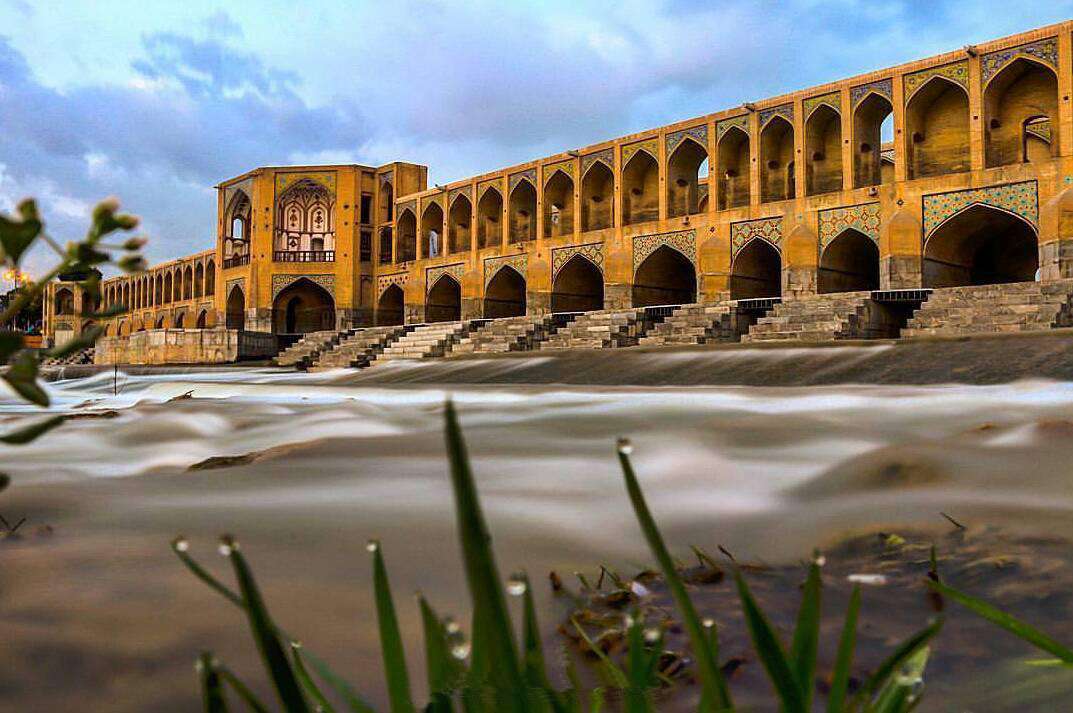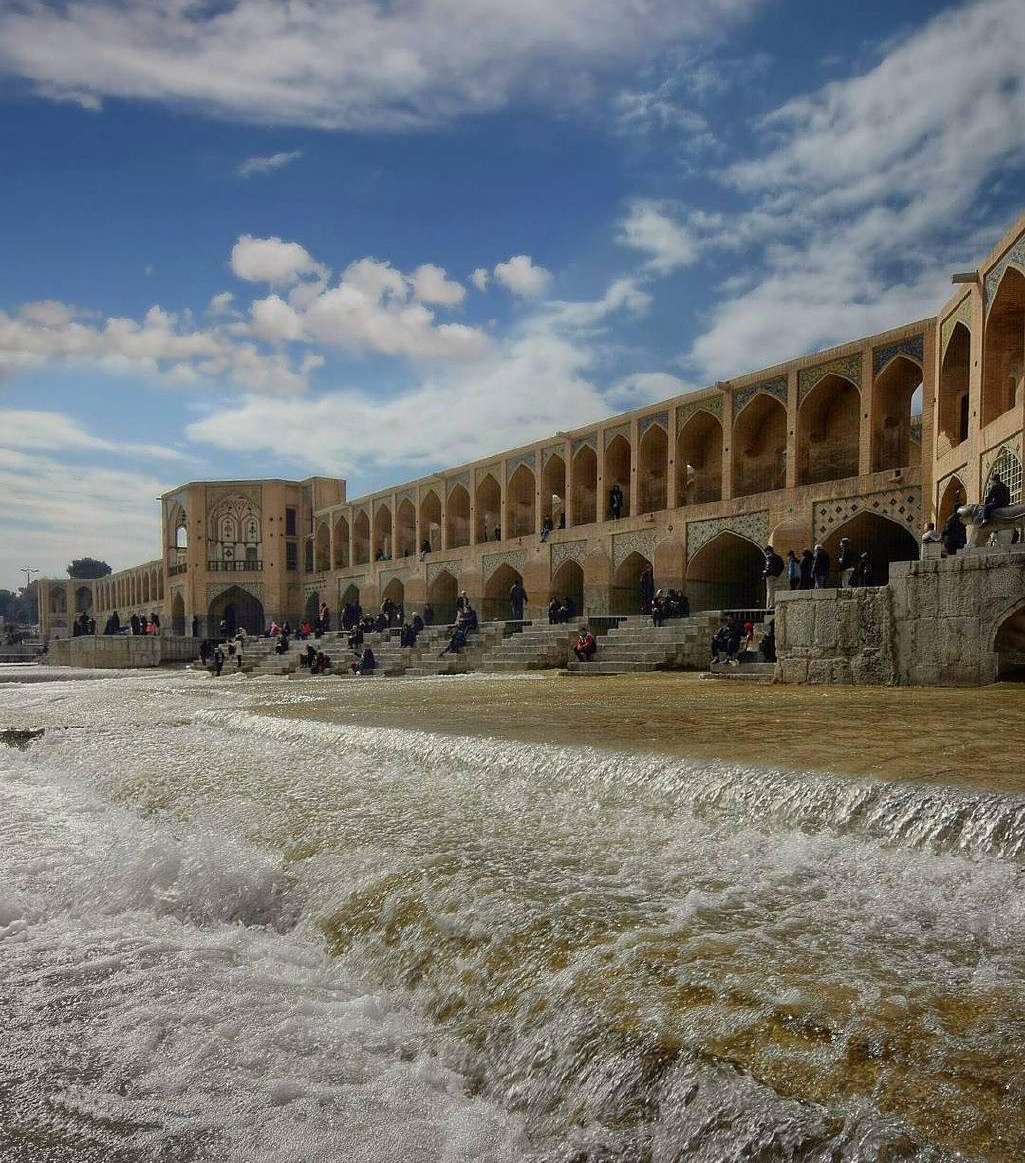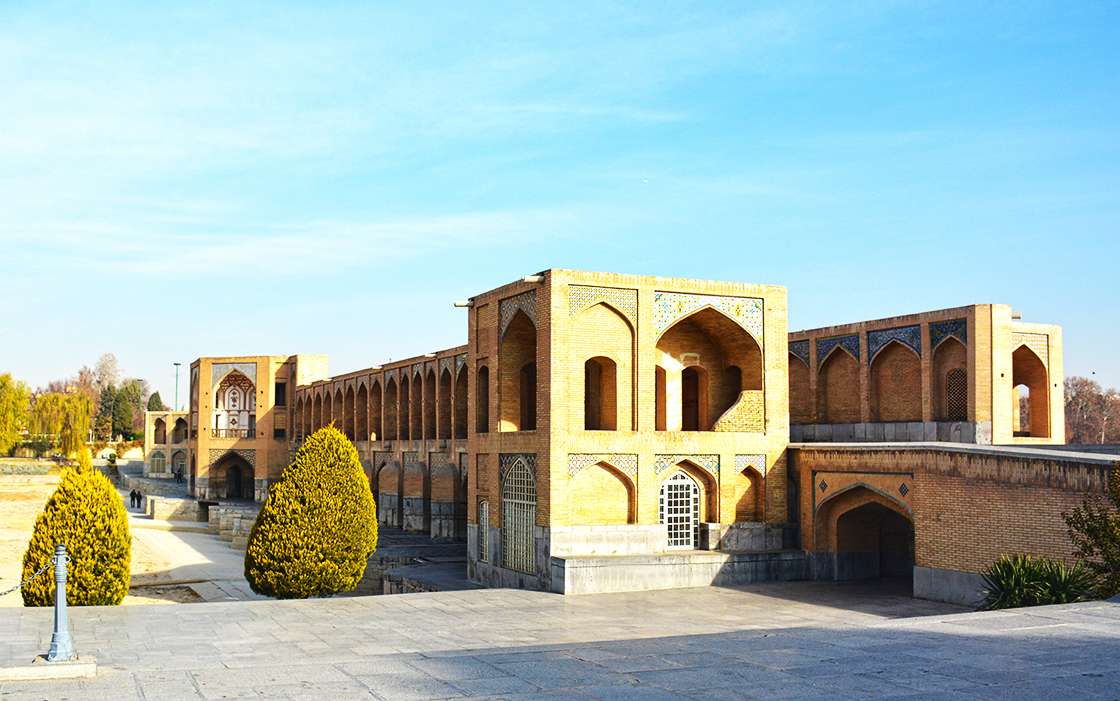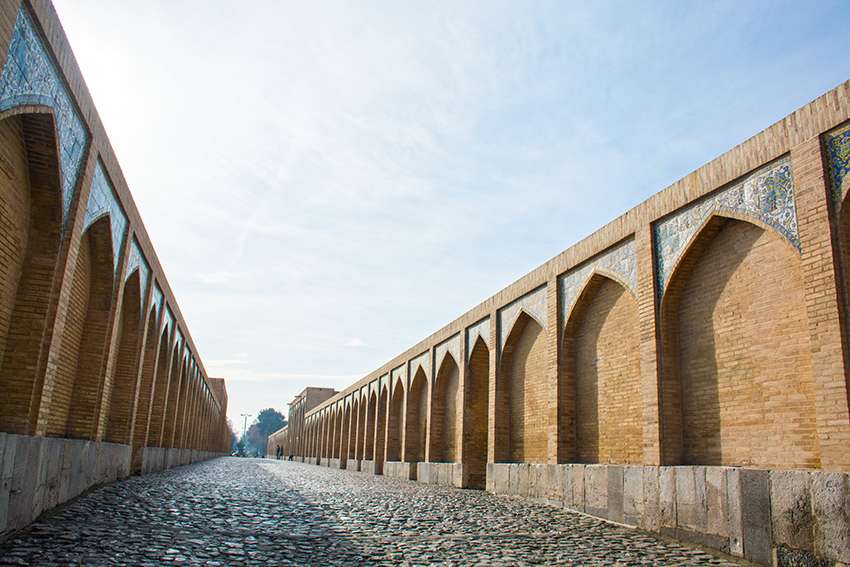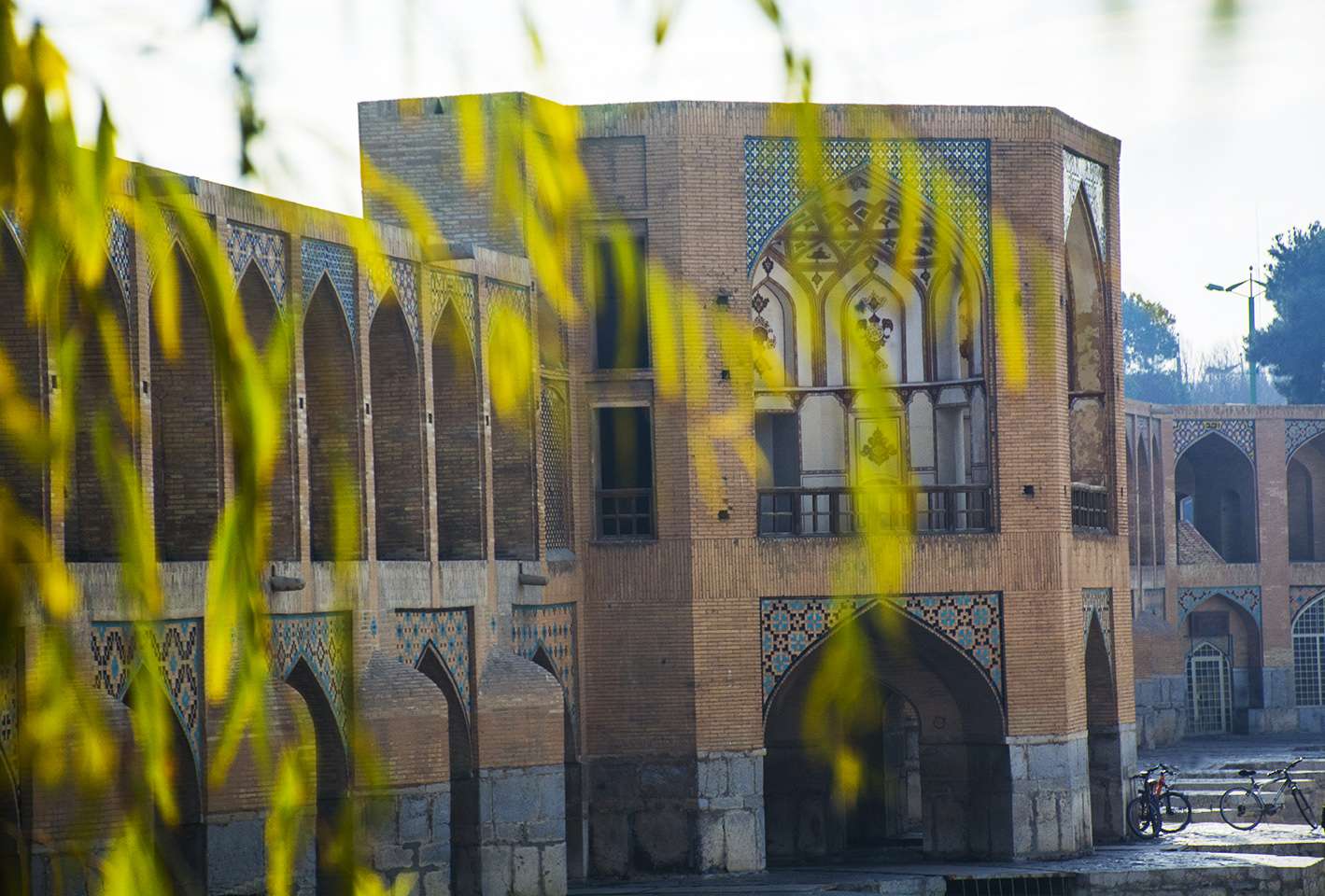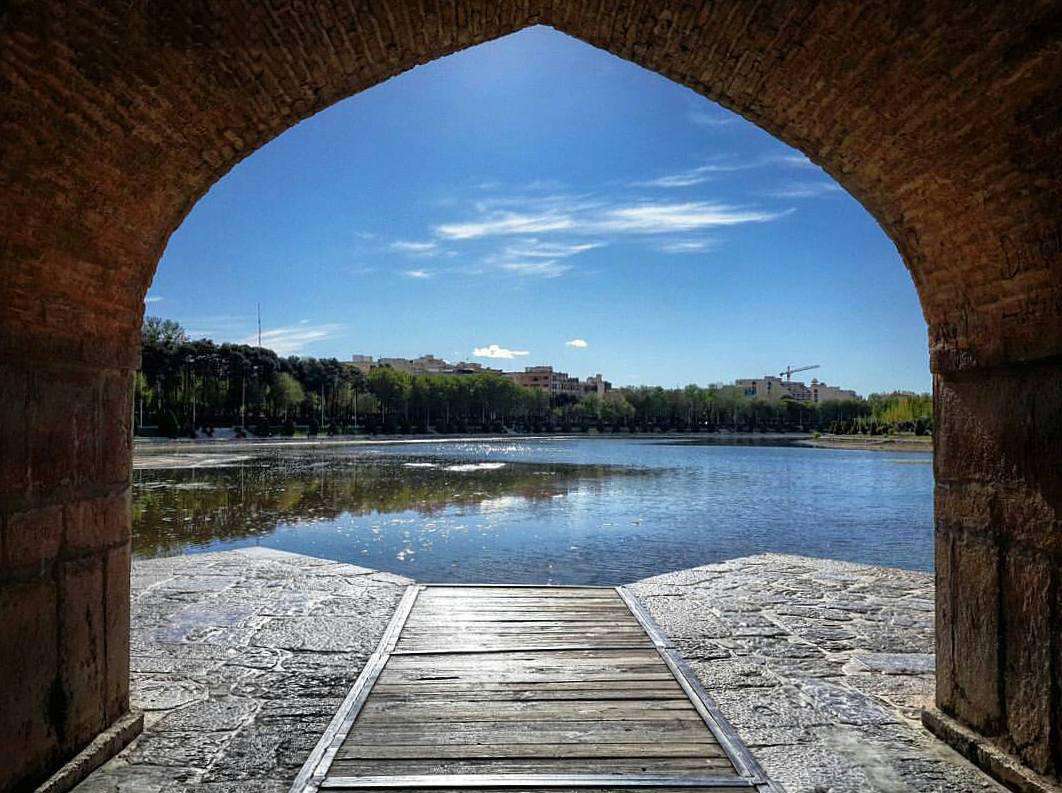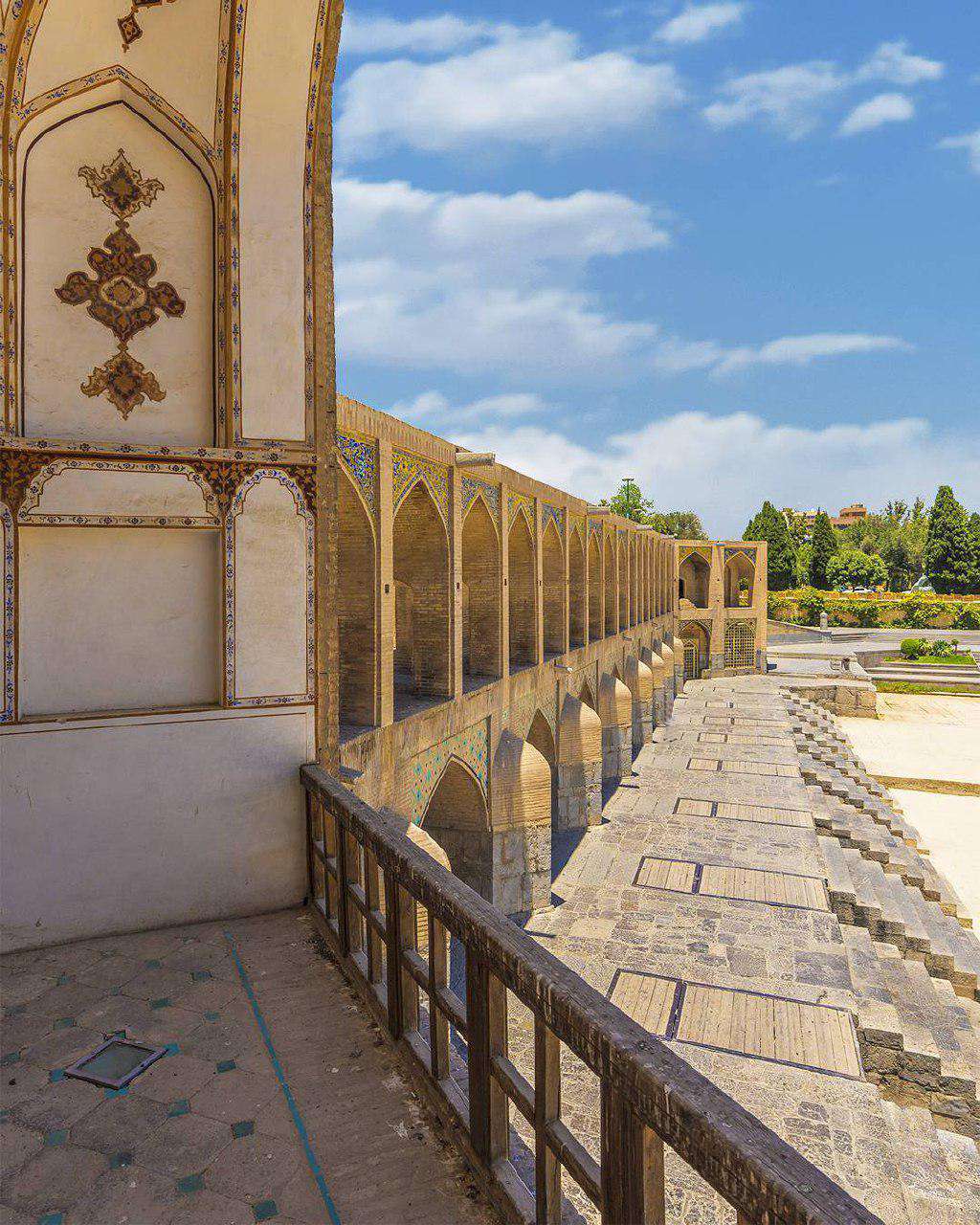Khaju Bridge

- Visiting
Khaju Bridge in Isfahan
- ThemeHistory and Culture/ Spiritual
- CodeIRSG10
- Duration1 hr(s)
- Spring7:00-22:00 *
- Summer7:00-22:00 *
- Autumn7:00-20:00 *
- Winter7:00-20:00
* Best Time
Photos of the Khaju Bridge
Explore the Khaju Bridge
Khaju Bridge (Pol-e Khaju)
Khaju Bridge (Khājū Bridge), or the Shahi (Royal) Bridge, was built over the foundations of Hassan-Abad Bridge, dating back to the 15th century, the Timurid period. The existing Khaju Bridge was built by the order of Shah Abbas II in 1650. It is recorded that when the construction completed, to celebrate the great work done, Shah Abbas II ordered to decorate the bridge lavishly with flowers, lanterns, golden sunshades, and exquisite carpets. Khaju is derived from the word Khajeh, a title used for the courtiers, and those close to the royal family, and it is applied to the bridge because it was located at the margins of the neighborhood in which bearers of this title lived. Actually, both the neighborhood and the bridge were called Khaju. This bridge is a double-decker one. The upper level was used by the caravans to pass the river, but the pedestrians, who could pass the upper level through its lateral corridors, had the entire lower floor to themselves. To tell you the truth, the lower path, instead of being a simple pass-way, was a den of leisure and pleasure. This is the only bridge that when the river flows you can walk both on and under the bridge. Up to very recently, people gathered under the bridge and those who had a hand in singing would treat the others to charming songs.
Khaju Bridge is the only bridge in Iran with seven-colored (haft-rang) tile decorations. Tavernier, a 17th-century French merchant, visited this bridge and described it as a royal bridge with 21 streams and 26 spans. It is also a bridge with various functions. Its 21 sluices had stone grooves, and could regulate water flow by placing wooden panels in these grooves. When the lower sluices were obstructed, a small lake was created which was suitable for boating at the time of festivals. Fireworks and their reflection in the water also enhanced the magnificence, and beauty of the bridge. Furthermore, when the wooden hatches closed the lower water path-way, the water level would rise up to 6 meters on the western side of the bridge. This process had the benefit of filling the underground reservoirs, saving the water for hot seasons. There are two pavilions (shahneshin) in the middle of the eastern, and western sides of the upper level. Each one of these Shahneshins has a large room, with three balconies. These rooms are covered with murals from the Qajar period (19th century,) hiding Safavid paintings from the 17th century. If you bend a little and look down, the moving water gives you the impression of being in a moving boat. During a flood, conical structures on the upper and lower storeys help water pass through the bridge, avoiding damage to the bridge itself.
Important Information
Additional Info
Cost Info
- Beryani in Azam Restaurant4 €
- Destination
- Transportation Type
- Transportation Fee---
